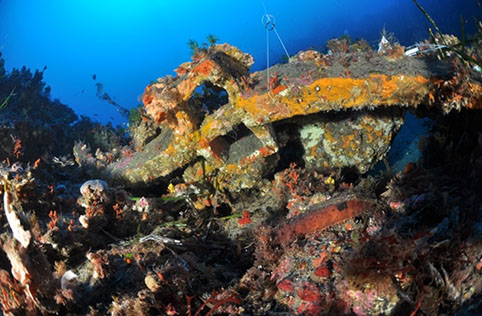August 2013. 2,200 year-old stone anchors abandoned by a Carthaginian invasion fleet off the coast of Sicily have been discovered by an underwater research team from the University of Sassari.

The cluster of at least 30 anchors, found at a depth between 160 and 270 feet in Cala Levante at the small Sicilian island of Pantelleria, appear to have been abandoned in haste during a recorded incident in the Punic Wars between Rome and its great rival, the city of Carthage.
According to Leonardo Abelli, an archaeologist from the University of Sassari, the anchors were abandoned during the First Punic War (264 to 241 BC).
“They were deliberately abandoned. The Carthaginian ships were hiding from the Romans and could not waste time trying to retrieve heavy anchors at such depths,” Abelli was quoted as saying.
Situated between Africa and Sicily, Pantelleria became a bone of contention between the Romans and Carthaginians during the third century BC. Rome captured the small Mediterranean island in the First Punic War in 255 BC, but lost it a year later.
In 217 BC, in the Second Punic War, Rome finally regained the island, and even celebrated the event with commemorative coins and a holiday.
Following the first conquer in 255 BC, Rome took control of the island with a fleet of over 300 ships.
“The Carthaginian ships that were stationing near Pantelleria had no other choice than hiding near the northern coast and trying to escape. To do so, they cut the anchors free and left them in the sea. They also abandoned part of their cargo to lighten the ships and gain speed,” Abelli said.
His team found many jars in clusters of 4-10 pieces near the spectacular Punta Tracino, not far from where the anchors were found.
Two years ago, the same team found 3,500 Punic coins about 68 feet down. Dating between 264 and 241 BC, the bronze coins featured the same iconography, suggesting that the money served for an institutional payment, possibly to sustain anti-Roman troops.
Carried on a Carthaginian ship headed to Sicily, the money was deliberately left on the bottom of the sea, in relatively low waters, with the hope of recovering it later.
“Near the coins we found a large stone anchor with three holes and a tree trunk. We believe they were signaling the point where the treasure was hidden,” Abelli said.







